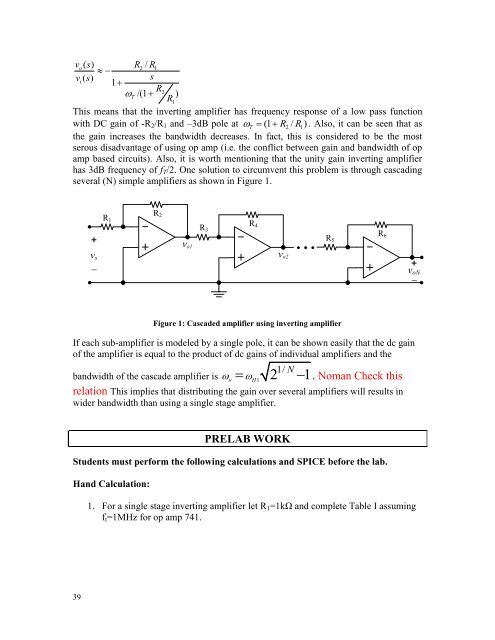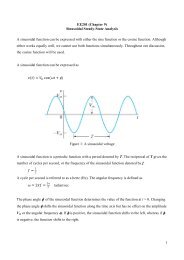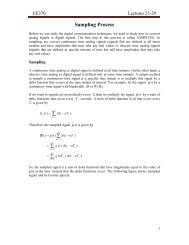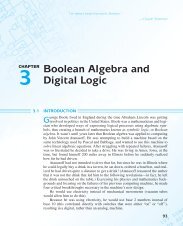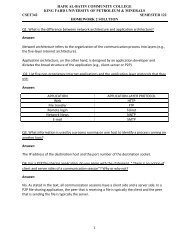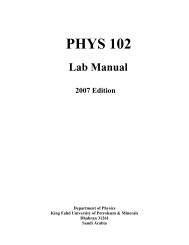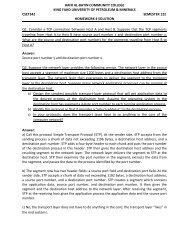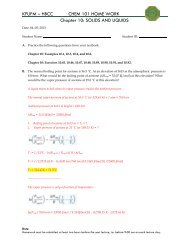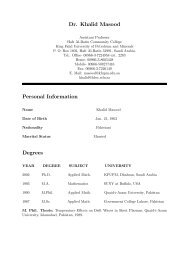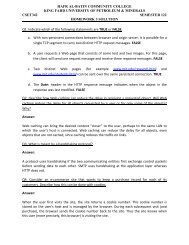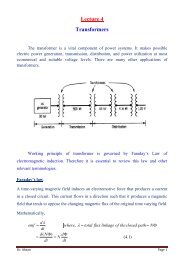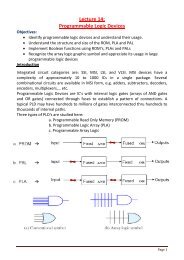Laboratory Manual - King Fahd University of Petroleum and Minerals
Laboratory Manual - King Fahd University of Petroleum and Minerals
Laboratory Manual - King Fahd University of Petroleum and Minerals
Create successful ePaper yourself
Turn your PDF publications into a flip-book with our unique Google optimized e-Paper software.
vo<br />
( s)<br />
R2<br />
/ R1<br />
<br />
v ( )<br />
s<br />
i<br />
s<br />
1<br />
R<br />
w /(1<br />
2<br />
T<br />
)<br />
R1<br />
This means that the inverting amplifier has frequency response <strong>of</strong> a low pass function<br />
with DC gain <strong>of</strong> -R 2 /R 1 <strong>and</strong> –3dB pole at w<br />
T<br />
( 1 R 2<br />
/ R1<br />
) . Also, it can be seen that as<br />
the gain increases the b<strong>and</strong>width decreases. In fact, this is considered to be the most<br />
serous disadvantage <strong>of</strong> using op amp (i.e. the conflict between gain <strong>and</strong> b<strong>and</strong>width <strong>of</strong> op<br />
amp based circuits). Also, it is worth mentioning that the unity gain inverting amplifier<br />
has 3dB frequency <strong>of</strong> f T /2. One solution to circumvent this problem is through cascading<br />
several (N) simple amplifiers as shown in Figure 1.<br />
+<br />
v s<br />
<br />
R 1<br />
R 2<br />
v o1<br />
R 3<br />
R 4<br />
v o2<br />
R 5<br />
R 6<br />
. . .<br />
+<br />
v oN<br />
<br />
Figure 1: Cascaded amplifier using inverting amplifier<br />
If each sub-amplifier is modeled by a single pole, it can be shown easily that the dc gain<br />
<strong>of</strong> the amplifier is equal to the product <strong>of</strong> dc gains <strong>of</strong> individual amplifiers <strong>and</strong> the<br />
1/ N<br />
b<strong>and</strong>width <strong>of</strong> the cascade amplifier is w w<br />
1<br />
2 1<br />
H H<br />
. Noman Check this<br />
relation This implies that distributing the gain over several amplifiers will results in<br />
wider b<strong>and</strong>width than using a single stage amplifier.<br />
PRELAB WORK<br />
Students must perform the following calculations <strong>and</strong> SPICE before the lab.<br />
H<strong>and</strong> Calculation:<br />
1. For a single stage inverting amplifier let R 1 =1kΩ <strong>and</strong> complete Table I assuming<br />
f t =1MHz for op amp 741.<br />
39


